Different birth controls and their side effects. Comprehensive Guide to Different Birth Control Methods: Types, Side Effects, Costs, and Effectiveness
What are the different types of birth control? What are their side effects? How much do they cost? How effective are they? Get all the answers in this comprehensive guide.
Understanding the Variety of Birth Control Options
When it comes to family planning and reproductive health, there is a wide range of birth control methods available, each with its own unique characteristics, advantages, and drawbacks. From traditional barrier methods to hormonal contraceptives, the choices can be overwhelming. This comprehensive guide will explore the different types of birth control, their side effects, costs, and effectiveness, empowering you to make an informed decision that best fits your needs and lifestyle.
Barrier Methods: Safeguarding Against Pregnancy and STDs
Barrier methods, such as condoms and diaphragms, form a physical barrier to prevent sperm from reaching the egg, offering protection against both pregnancy and certain sexually transmitted diseases (STDs). Let’s examine some of the key barrier options:

Male Condoms
The latex condom is a widely available and cost-effective option, offering protection against pregnancy and some STDs. However, it requires proper use every time to be effective, with a 15% chance of pregnancy for couples who rely on it alone.
Female Condoms
The female condom is a thin plastic pouch that lines the vagina, providing some protection against pregnancy and STDs. While it is widely available, it is less effective than the male condom, with a 21% chance of pregnancy in a typical year of use.
Diaphragms and Cervical Caps
Diaphragms and cervical caps are reusable barrier devices that women place over the cervix before sex. They must be used with a spermicide and have a higher failure rate, with a 16% chance of pregnancy in a typical year for diaphragms and up to 30% for women who have had children using cervical caps.
Spermicides and pH-Balancing Gels
Spermicides and pH-balancing gels are another category of barrier methods that work by immobilizing or killing sperm. These include traditional spermicides and the newer Phexxi gel, which helps maintain the vagina’s acidic pH to discourage sperm survival.

Spermicides
Spermicides are foams, jellies, creams, or films that are inserted into the vagina before sex. They can be used alone or in conjunction with other birth control methods, but they have a relatively high failure rate of 29% during the first year of use and can increase the risk of vaginal irritation and STDs.
Phexxi Gel
Phexxi is a new, non-hormonal birth control gel that helps maintain the vagina’s natural acidic environment, which is inhospitable to sperm. It is applied up to an hour before sex and is about as effective as condoms, with the added benefit of being usable with other barrier methods for increased protection.
Hormonal Contraceptives: Preventing Ovulation
Hormonal birth control methods work by preventing ovulation, the release of an egg from the ovary, and in some cases, thickening the cervical mucus to impede sperm movement. These options include oral contraceptives, patches, rings, and injections.
Oral Contraceptives (Birth Control Pills)
The most common type of hormonal birth control is the combination pill, which contains both estrogen and progestin. When taken correctly, it is highly effective, with only an 8% chance of pregnancy in a typical year of use. However, it does not protect against STDs and can have side effects such as breast tenderness, spotting, and increased blood pressure.

Birth Control Patches and Rings
Hormonal patches and vaginal rings, such as Ortho Evra, Twirla, and NuvaRing, deliver the same hormones as birth control pills but in a different format. They offer the convenience of less frequent administration, with the patch changed weekly and the ring replaced monthly. These options have similar effectiveness and side effects to oral contraceptives.
Long-Acting Reversible Contraceptives (LARCs)
Long-Acting Reversible Contraceptives (LARCs) are highly effective, low-maintenance birth control methods that can provide protection for several years. These include intrauterine devices (IUDs) and implants.
Intrauterine Devices (IUDs)
IUDs are small, T-shaped devices that are inserted into the uterus by a healthcare provider. They can be hormonal or non-hormonal and provide long-term pregnancy prevention with a failure rate of less than 1%. IUDs do not protect against STDs, and there is a small risk of pelvic inflammatory disease or expulsion.
Contraceptive Implants
Contraceptive implants, such as Nexplanon, are small, thin rods that are inserted under the skin of the upper arm. They release a steady dose of progestin to prevent pregnancy for up to five years. Implants have a failure rate of less than 1% and do not protect against STDs.
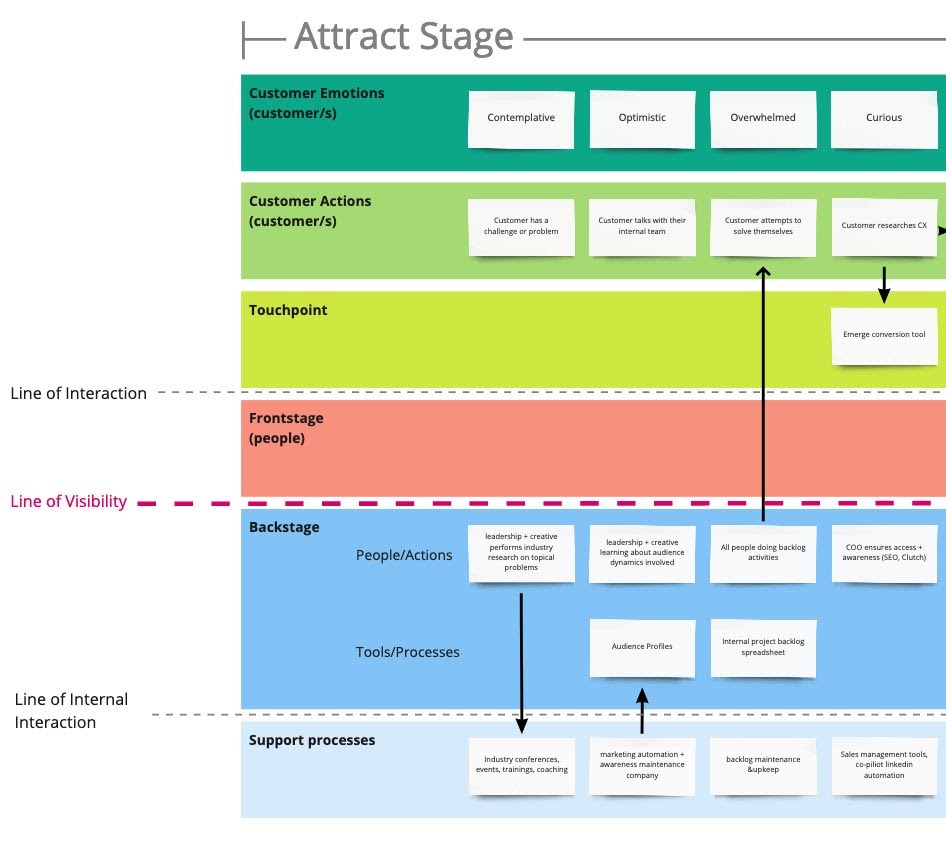
Choosing the Right Birth Control: Factors to Consider
When selecting a birth control method, it’s important to consider factors such as your personal health, lifestyle, sexual activity, and personal preferences. Factors to weigh include:
- Desired level of effectiveness
- Convenience and ease of use
- Protection against STDs
- Hormonal vs. non-hormonal options
- Cost and insurance coverage
- Potential side effects
By understanding the available options and their unique characteristics, you can make an informed decision that best meets your reproductive health needs and personal preferences.
Consulting with a Healthcare Provider
Ultimately, the choice of birth control method is a personal one, and it’s important to consult with a healthcare provider to discuss your options, address any concerns, and ensure the selected method is appropriate for your individual circumstances. They can provide guidance, perform necessary examinations or tests, and help you navigate the complexities of family planning.

Pictures, Types, Side Effects, Costs, & Effectiveness
Medically Reviewed by Traci C. Johnson, MD on March 09, 2023
Start with a few questions: How will you protect against STDs? How important are convenience and cost? What about how well it works? Only abstinence is 100% effective, but there are methods that come close if you use them right.
This is a foam, jelly, cream, or film that goes into the vagina before sex that contains a chemical that kills sperm. Some types must be put in place 30 minutes ahead of time. If you use it often, it can irritate the vagina, making infections and STDs more likely. People usually use other types of birth control with it.
Pros: Easy to use, inexpensive.
Cons: May make STDs more likely, and 29% get pregnant during first year of use.
This new nonhormonal birth control gel can be used in place of spermicide. A healthy vagina is acidic, but semen (the fluid that has sperm in it) makes it more alkaline so sperm have a better chance of surviving. Phexxi weakens sperm by helping keep your pH levels low. It comes in 12 prefilled applicators. You can put it in your vagina up to 1 hour before sex.
Phexxi weakens sperm by helping keep your pH levels low. It comes in 12 prefilled applicators. You can put it in your vagina up to 1 hour before sex.
Pros: It’s easy to use and is about as effective as condoms, and you can use it with condoms for more protection. You can also use it with cervical caps and diaphragms.
Cons: Doesn’t protect against STDs and may irritate some people. You insurance may not cover it. The cost without insurance is about $250-$275 for 12 doses.
The latex condom blocks sperm from entering the woman’s body, which protects against pregnancy and some STDs. Of couples who rely on male condoms only, 15% get pregnant in a year.
Pros: Widely available, protects against some STDs, inexpensive.
Cons: Effective only if used correctly every time. Can’t be reused.
This is a thin plastic pouch that lines the vagina. A woman can put it in place up to 8 hours before sex. To do that, they would grasp a flexible plastic ring at the closed end and guide it into position. It doesn’t work as well as the male condom.
It doesn’t work as well as the male condom.
Pros: Widely available, offers some protection against STDs.
Cons: Can be noisy, 21% of users get pregnant, and not reusable. Should not be used with a male condom to avoid breakage.
This is a rubber dome that women place over their cervix before sex. You should also use a spermicide. Of 100 women who use it, 16 get pregnant in a typical year.
Pros: Inexpensive (a $15-$75 device lasts 2 years).
Cons: Must be fitted by a doctor. No STD protection. Can’t be used during your period due to a risk of toxic shock syndrome.
This device, also called the FemCap, is similar to a diaphragm but smaller. It slips into place over the cervix. You use it with spermicide. About 15% of women who never had children get pregnant when using the cervical cap. About 30% of women who have had children get pregnant.
Pros: Can stay in place for 48 hours, inexpensive.
Cons: Must be fitted by a doctor. No protection against STDs. You can’t use it during your period.
It’s made of foam and contains spermicide. Women can place it against their cervix up to 24 hours before sex. It prevents pregnancy about as well as the cervical cap. But unlike that product or the diaphragm, you don’t need to get fitted by a doctor.
Pros: No prescription, effective immediately.
Cons: Can be hard to put in. No STD protection. You can’t use it during your period.
The most common type uses estrogen and progestin to prevent ovulation. It’s very effective if taken right. About 8% of women who use it get pregnant. You’ll need a prescription for it.
Pros: Lighter, more regular periods or no periods, depending on the type. Less cramping.
Cons: Cost ($0-$50 per month). No STD protection. May cause breast tenderness, spotting, blood clots, and raised blood pressure.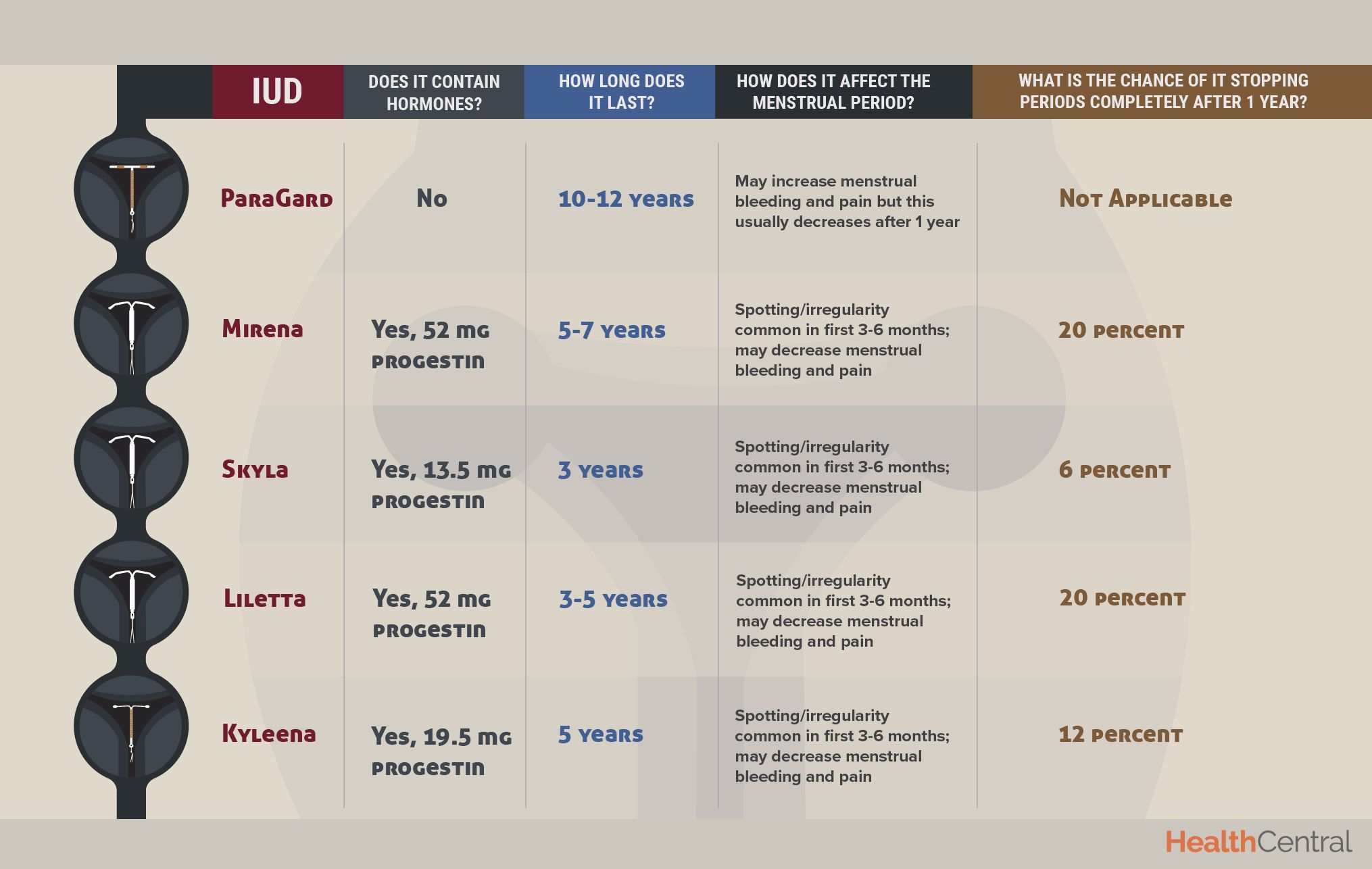 Some women shouldn’t use it due to health risks.
Some women shouldn’t use it due to health risks.
Women who forget to take daily pills may want the Ortha Evra, Twirla or Xulane patch. You wear it on your skin and change it once a week for 3 weeks, then go a week without it. It releases the same hormones in birth control pills and works just as well.
Pros: Lighter, more regular periods with less cramping. No need to remember a daily pill.
Cons: Cost ($0-$50 per month). May cause skin irritation or other side effects similar to birth control pills. No STD protection.
The vaginal ring is a soft plastic ring that goes inside the vagina. It releases the same hormones as the pill and patch, and it works just as well to prevent pregnancy. There are two types available: Annovera and NuvaRing. Annovera can be reused after a 1-week break each month. NuvaRing is replaced each month.
Pros: Lighter, more regular periods. Less-frequent replacement.
Cons: Cost ($30-$50 per month).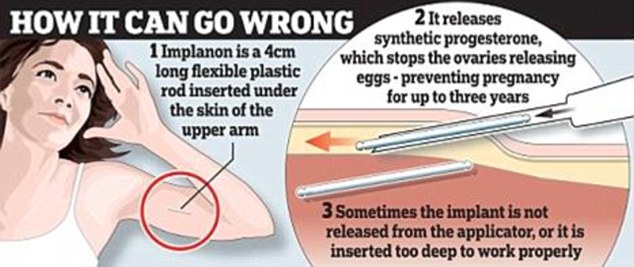 May cause vaginal irritation or other side effects similar to pills and the patch. Doesn’t protect against STDs.
May cause vaginal irritation or other side effects similar to pills and the patch. Doesn’t protect against STDs.
It’s called Depo-Provera, and it’s a hormonal shot that protects against pregnancy for 3 months. For the typical couple, it works better than the birth control pill. Only 3% of users get pregnant in a year.
Pros: Injected only 4 times per year, highly effective.
Cons: Cost (about $240 per year). May cause spotting and other side effects. Doesn’t protect against STDs.
Nexplanon is a matchstick-sized rod that a doctor places under the skin of a woman’s upper arm. It releases the same hormone that’s in the birth control shot. The failure rate is less than 1%.
Pros: Protects against pregnancy for 3 years and then must be removed. Highly effective.
Cons: More expensive up front ($400-$800 for exam, implant, and insertion). May cause side effects, including irregular bleeding. Doesn’t protect against STDs.
That stands for intrauterine device. It’s placed inside a woman’s uterus. The nonhormonal copper IUD, ParaGard, works for as long as 10 years. The hormonal IUDs must be replaced after 3-5 years. Both types make it harder for sperm to fertilize the egg. Fewer than 8 in 1,000 women get pregnant.
Pros: Long-lasting, low-maintenance. Hormonal IUDs can make periods shorter and lighter.
Cons: Irregular or heavier periods. Copper IUDs can make periods more painful. More expensive up front, may slip out, may cause side effects.
If you’re sure you won’t want to get pregnant, you may be ready for permanent birth control. The operation for women is called tubal ligation, or “having your tubes tied.” A surgeon closes off the fallopian tubes. This prevents an egg from meeting sperm. (The banding method is shown here.)
Pros: Permanent, nearly 100% effective.
Cons: Requires surgery, may not be reversible, expensive. Doesn’t protect against STDs.
Doesn’t protect against STDs.
Other than condoms, a vasectomy is the only birth control option for men. A doctor surgically closes the vas deferens, the tube that carries sperm from a testicle. This prevents the release of sperm but doesn’t affect ejaculation.
Pros: Permanent, cheaper than tubal ligation, almost 100% effective.
Cons: Requires surgery, not effective immediately, may not be reversible. Doesn’t prevent STDs.
This method works within a few days after sex to help avoid pregnancy. This is an option if you didn’t use contraception or if a woman suspects their usual method failed. There are lots of types to choose from, including brand-name pills or generic versions. You can get some of them over the counter or by prescription. You may also get a copper IUD inserted by a medical professional..
If you’re over age 35 and smoke or are obese, the combination birth control pill, the patch, and the ring are not recommended. Ask your doctor about safe alternatives. If you’re nearing menopause, the birth control shot has an added benefit: It may relieve some of the symptoms of perimenopause.
Ask your doctor about safe alternatives. If you’re nearing menopause, the birth control shot has an added benefit: It may relieve some of the symptoms of perimenopause.
“Pulling out” is the age-old method that relies on the man withdrawing their penis from the vagina before ejaculation. If it’s done correctly every time, about 4% of users get pregnant in a year. But with more typical use, about 18% get pregnant.
Pros: Free, no need for devices or hormones.
Cons: May be hard to do correctly. No protection against STDs.
A lot of women who want to get pregnant use these to figure out when they’re most fertile. The kit comes with a urine test that checks how much luteinizing hormone (LH) you have. LH surges 24 to 38 hours before you ovulate, which is when you’re most likely to get pregnant. To try to prevent pregnancy, don’t have sex when you’re ovulating.
Pros: No drugs, inexpensive.
Cons: Limits spontaneous sex, and the odds of getting pregnant are high.
Without using any form of birth control, 85% of sexually active couples will get pregnant within a year. Even the least effective birth control options greatly lower that number.
If you don’t want to get pregnant, it really matters how correctly you use your method of birth control. The most effective types are those that you don’t have to think about.
IMAGES PROVIDED BY:
1) Asia Images Group / Getty, PhotoAlto / Ale Ventura, Thomas Tolstrup / Photographer’s Choice
2) Hemera / Getty
3) Kat-Ka / Getty Images
4) Steve Pomberg / WebMD
5) Steve Pomberg / WebMD
6) Peggy Firth and Susan Gilbert, CMI, for WebMD, Keith Brofsky / Thinkstock
7) Peggy Firth and Susan Gilbert, CMI, for WebMD, Maggie Murray / Photolibrary
8) Steve Pomberg / WebMD, Peggy Firth and Susan Gilbert, CMI, for WebMD
9) Steve Pomberg / WebMD, Peggy Firth and Susan Gilbert, CMI, for WebMD
10) Don Farrall / Photolibrary
11) Philippe Garo / Photo Researchers, Inc.
12) sodapix / Photolibrary
13) ERproductions Ltd / Blend Images
14) PHANIE / Photo Researchers, Inc.
15) Peggy Firth and Susan Gilbert, CMI, for WebMD
16) Peggy Firth and Susan Gilbert, CMI, for WebMD
17) Peggy Firth and Susan Gilbert, CMI, for WebMD
18) Cordelia Molloy / Photo Researchers, Inc.
19) Jetta Productions / Walter Hodges / Photolibrary
20) George Diebold / Getty
21) iStockphoto / Thinkstock
22) Corbis
SOURCES:
American College of Obstetricians and Gynecologists.
American Pregnancy Association.
CDC.
FDA.
Guttmacher Institute.
HRA Pharma briefing document, June 17, 2010, meeting of Advisory Committee for Reproductive Health Drugs.
Jones R. Contraception,June 2009.
FDA briefing document, June 17, 2010, meeting of Advisory Committee for Reproductive Health Drugs.
Keoniger-Donohue, R. Women’s Health Care: A Practical Journal for Nurse Practitioners, 2006.
Lannon B. V. Fertility and Sterility, August 2007.
V. Fertility and Sterility, August 2007.
Liletta.
Mirena.
National Women’s Health Information Center.
National Women’s Health Network: “Fact Sheet: Phexxi Contraceptive Gel.”
Hatcher, R. A. et al., eds. Contraceptive Technology, 19th ed. New York: Ardent Media, 2007.
Speroff, L., Darney, P.D. A Clinical Guide for Contraception. Philadelphia: Lippincott Williams and Wilkins, 2005.
Skyla.
The Nemours Foundation.
© 2023 WebMD, LLC. All rights reserved. View privacy policy and trust info
11 Forms Of Birth Control—And Their Side Effects – Forbes Health
If you’re looking to lower your chances of pregnancy (or take certain forms of birth control to reduce the side effects of your period, including cramping and hormonal acne), you have dozens of options. There’s hormonal birth control pills, patches, birth control shots, intrauterine devices (IUDs) and more. When considering what kind of birth control works best, your first thought might be potential side effects.
Read on for everything you need to understand the different types of birth control and their side effects.
FEATURED PARTNER OFFER
Partner Offers feature brands who paid Forbes Health to appear at the top of our list. While this may influence where their products or services appear on our site, it in no way affects our ratings, which are based on thorough research, solid methodologies and expert advice. Our partners cannot pay us to guarantee favorable reviews of their products or services
Nurx Birth Control
- Offers 50+ birth control formulas
- Medical providers will help you find the right one for your body and your lifestyle online
- Choose from the pill, patch, ring or shot
- $0 copay with most insurance plans or pay as low as $15 for the medication
- Offer free shipping with discreet packaging
Shop Now
On Nurx’s Website
What Is Birth Control?
Birth control is a way to prevent pregnancy, and it comes in many forms. Some forms of birth control might have beneficial side effects, such as making periods lighter, and people may take them for reasons other than preventing pregnancy.
Some forms of birth control might have beneficial side effects, such as making periods lighter, and people may take them for reasons other than preventing pregnancy.
Birth control varies in terms of its permanence. The permanent option is sterilization, including tubal ligation and vasectomy (a procedure that can be reversible), which alters the tubes that carry either sperm or eggs, rendering them ineffective for reproduction.
Another option is a long-acting reversible contraceptive method, such as an IUD or hormonal implant. Many people choose these options or a short-acting hormonal contraceptive, such as the hormonal birth control pill, patch, ring or shot. Both long-acting and short-acting birth control work by either preventing ovulation or preventing sperm from reaching an egg in order to stop a pregnancy from occurring.
If you don’t want to use one of these methods, there are barrier methods, including condoms, diaphragms,vaginal pH modulators or spermicides, all of which are designed to prevent sperm from reaching an egg. Other birth control methods don’t involve using any kind of added protection, such as menstrual cycle tracking. These types of birth control won’t necessarily have the same side effects as certain forms of hormonal birth control but rely more on the user to use a method before every act of intercourse or track menstrual cycles daily.
Other birth control methods don’t involve using any kind of added protection, such as menstrual cycle tracking. These types of birth control won’t necessarily have the same side effects as certain forms of hormonal birth control but rely more on the user to use a method before every act of intercourse or track menstrual cycles daily.
The cost and accessibility of different types of birth control varies. The Affordable Care Act does require insurance plans to cover all FDA-approved methods of birth control, without co-pay, including the hormonal birth control pill, IUDs and tubal ligation procedures. Medicaid covers birth control as well. For those who are uninsured, reproductive health clinics may be able to provide free or low cost birth control options.
What Types of Birth Control Are Available?
There are dozens of hormonal and non-hormonal forms of birth control. Keep in mind that some have a higher effectiveness rate than others (note that all effectiveness rates listed below are according to Planned Parenthood unless otherwise indicated).
Hormonal Birth Control Pills (Oral Contraceptives)
One of the most common types of birth control are hormonal birth control pills, or oral contraceptives. There are two types: combination birth control pills and progestin-only birth control pills, or the mini pill. The hormones in these pills taken every day work to prevent pregnancy by either stopping ovulation and/or by thickening cervical mucus and preventing sperm from reaching an egg. If you take them as guided, every day at the exact same time, they have a 99% effectiveness rate.
IUDs
An intrauterine device (IUD) can be inserted into the uterus by a healthcare provider, and is effective for anywhere from three to 12 years, touting an effectiveness rate of 99% on its own. There are two types: a hormonal IUD, typically made of plastic that releases a progestin hormone slowly over time, and a non-hormonal IUD, made of plastic and copper. Both types work similarly, by essentially blocking sperm from reaching an egg, either through thickening cervical mucus (hormonal) or creating an inhospitable environment for sperm inside the uterus (non-hormonal).
Vaginal Rings
There are two different types of vaginal rings. One is left in for three weeks before it is removed and replaced with a new ring one week later. A newer version of the vaginal ring allows the user to use the same vaginal ring for one year, 13 cycles total, by inserting the soft, squishy ring each cycle directly into the vagina for 21 days and removing it for seven days (in order to have a menstrual period), explains Yen Hope Tran, D.O., an OB-GYN at Memorial Care Orange Coast Medical Center in Fountain Valley, California. It also works 99% of the time if used exactly as directed, and functions by both preventing ovulation and thickening cervical mucus, making it more difficult for sperm to enter the uterus.
Hormonal Patches
The hormonal patch works similarly to the vaginal ring and hormonal birth control pills: It releases hormones that prevent the release of eggs and prevent a sperm meeting an egg by thickening cervical mucus. You stick one new patch directly on your skin (you can apply it anywhere other than the breasts) weekly, and it’s considered 99% effective at preventing pregnancy if you do not apply it late, meaning that you must apply it on the exact same day each week.
Hormonal Birth Control Implants
A hormonal implant is placed under the skin by a health care provider in order to prevent pregnancy for up to three years. It releases a progestin-only hormone to stop ovulation from occurring and also thicken cervical mucus, similar to other hormonal options of birth control. The implant is highly effective at preventing pregnancy with efficacy of 99%.
Depo-Provera Shots
Another option is an injection called Depo-Provera which is given every three months. Like other hormonal methods, the shot prevents pregnancy mainly by stopping ovulation and thickening cervical mucus to prevent sperm from reaching an egg. If you follow up with the shots and get them in a timely manner, the effectiveness rate is 99%. Currently the shots are only approved for administration by a health care provider but research is being done to test whether patients can safely give one type of the shot to themselves at home, similar to insulin or other subcutaneous (under the skin) self-injections.
Barrier Methods
Barrier methods are non-hormonal methods of birth control that do not involve taking any pills, shots or any insertion procedures by a health care provider. These include external condoms, internal condoms (previously known as “female condoms,” which are inserted into the vagina prior to intercourse), diaphragms or cervical caps. All barriers work by keeping sperm from reaching an egg. These methods are between 86% and 98% effective at preventing pregnancy when used consistently and correctly every time you have sex, and condoms are the only birth control method that can also protect against sexually transmitted infections (STIs).
Time-Saving Birth Control, With a Side of Expert Care
Hers worked with expert OB/GYNs and women’s health advisors to develop an online intake process that offers the same level of care as an in-person doctor visit. You’ll answer questions about your medical history, previous birth control medications, and goals to help the provider determine the best birth control plan for you.
Get Started
Non-Hormonal Gel
A newer form of non-hormonal contraception is Phexxi, a gel you can use right before or up to an hour before sex, without having to take any kind of daily, weekly or monthly birth control. Here’s how it works: “When semen enters the vagina, it raises the vagina’s pH levels from its typical range of 3.5 to 4.5 to a range of 6.5 to 7.2.,” explains Dr. Tran. “This increase in pH is what allows sperm to move and swim up the reproductive canal [in order to reach an egg and cause pregnancy].” Phexxi keeps the vaginal pH at its normal level, even when semen is introduced, making the environment of the vagina inhospitable to sperm. To insert the gel into the vagina, there’s a tampon-like device for one-time use. The gel then starts working immediately and lasts up to an hour for each act of vaginal sex, adds Dr. Tran. Phexxi is 93% effective when used consistently and correctly. Phexxi can also be used with barrier methods or any method other than the vaginal ring to increase effectiveness and has lubricating properties, so additional lubrication is not needed.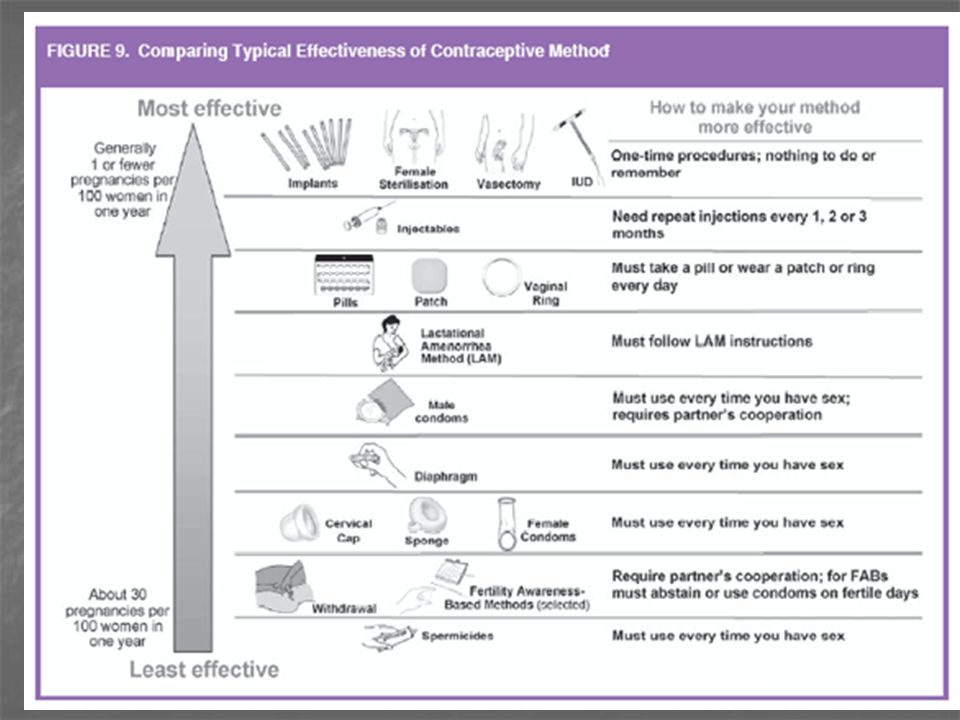
Withdrawal
The “pulling out” method is pretty well-known as a “DIY” method of birth control: It involves withdrawing before ejaculation, and is typically used without a condom. It’s about 96% effective with perfect use and 80% effective with typical use[1]Contraceptive Failure Rates. ContraceptiveTechnology.org. Accessed 4/19/2022. .
Cycle Tracking
Tracking your monthly cycle—also known as natural family planning or fertility awareness—is another form of birth control that involves tracking menstruation, cervical mucus and/or basal body temperature to predict ovulation and peak fertility days in order to avoid sexual activity, and therefore pregnancy, on those days. Effectiveness is highly dependent on the methods of cycle tracking (tracking menstruation, cervical mucus and/or basal body temperature) and ranges from 76-99%.
Vasectomy or Tubal Ligation
Permanent forms of birth control include surgical procedures like a vasectomy or tubal ligation. A tubal ligation involves blocking or tying off the fallopian tubes so that eggs will not be able to be fertilized or transported to the uterus. A vasectomy is a surgery that blocks the vas deferens, the tubes that carry sperm, preventing sperm from being released into the ejaculate and potentially meeting with an egg. While a tubal ligation is often not successfully reversible, a vasectomy reversal is possible and typically has successful outcomes. Both methods should only be considered if you are certain you do not want future pregnancies.
What Are the Side Effects of Birth Control?
Each form of hormonal birth control could affect each person very differently and side effects vary widely from one method to another.
Hormonal Birth Control Pills, Patch and Vaginal Ring
Common side effects with these methods of birth control, according to Sophia Yen, M. D., an OB-GYN and founder and CEO of birth control company Pandia Health and a Forbes Health Advisory Board member, include:
D., an OB-GYN and founder and CEO of birth control company Pandia Health and a Forbes Health Advisory Board member, include:
- Nausea
- Headaches
- Irregular or decreased menstrual bleeding
- Increased breast size or breast tenderness
- Mood changes
- Vaginal irritation (for the vaginal ring)
You can avoid nausea or any gastrointestinal side effects by taking your birth control pill with your largest meal, taking it at the same time every day and making sure that other medications you might be taking don’t have any interactions with birth control, says Dr. Yen.
There are some positive side effects of birth control pills, too, according to Dr. Yen. Because ovulation is decreased, taking hormonal birth control can lower your risk of ovarian and endometrial cancers.
The one-year vaginal ring has a lower estrogen output, and is generally recommended for people over 30, explains Dr. Yen. This estrogen level might be too low for you if you’re under 30, based on your natural hormone levels.
The hormonal patch may be less effective for people who are overweight or obese. The hormonal concentration of the original patches were a concern due to a potential increase in the risk of blood clots. “Twirla [another newer hormonal birth control patch] was specifically created to address that concern and has lower hormones,” says Dr. Tran.
Hormonal IUD
This type of birth control may result in the following side effects, according to Dr. Yen:
- Acne
- Lighter or skipped periods
- Cramping or irregular spotting, particularly in the months following placement
- Mood changes
IUD placement requires a pelvic exam, which can be painful. If the device is placed incorrectly, it may be expelled out the vagina (making it ineffective) or perforate through the wall of the uterus and end up inside the abdomen. This can require a surgical procedure and general anesthesia to remove.
Non-Hormonal IUD
Side effects of non-hormonal IUDs, according to Dr. Yen, may include:
Yen, may include:
- Heavier menstrual bleeding
- Cramping
Because a copper IUD has no hormones stopping ovulation, your periods should continue in their regular frequency but the IUD could cause the periods to be heavier and more painful. But, if you’re someone who doesn’t have much period pain or heavy periods, it could be the right choice for you. Also, if you have health conditions (including a history of breast cancer or blood clots) and are not able to take hormonal birth control, a copper IUD could be a good option, adds Dr. Yen.
Hormonal Birth Control Implant
There are a couple of potential side effects for birth control implants, says Dr. Yen:
- Mood changes
- Acne
- Lighter or skipped periods
- Pain or bruising at the insertion site
Side effects for the arm implant seem to be similar to other forms of birth control. But in terms of effectiveness, the hormonal birth control implant has the least room for error compared to most other forms of hormonal birth control, says Dr. Yen (once it’s inserted in your arm, it can’t move, and you don’t have to remember to take it).
Yen (once it’s inserted in your arm, it can’t move, and you don’t have to remember to take it).
Depo-Provera Shot
The hormonal birth control shot might induce some of the following effects, according to both Dr. Yen and Dr. Tran:
- Increased appetite
- Bone density issues
- Missed or irregular periods
- Mood changes
- Sore breasts
- Headaches
Non-Hormonal Gel
Side effects with Phexxi can include:
- Urinary tract infections (UTIs)
- Yeast infections
- Bacterial vaginosis (BV) infections
- Vaginal burning, itching and discharge
While most people don’t experience infections with Phexxi (in fact only 2% of participants in clinical trials discontinued due to side effects), these side effects are worth considering if you’re already prone to these types of infections and have them recurrently.
Tubal Ligation
Most of the side effects associated with a sterilization procedure involve the recovery from surgery. One less common risk could be an ectopic pregnancy that occurs within the fallopian tubes, says Dr. Yen, but this is not common.
One less common risk could be an ectopic pregnancy that occurs within the fallopian tubes, says Dr. Yen, but this is not common.
Other Forms of Birth Control (Barrier Methods, Withdrawal, Cycle Tracking)
There are no marked side effects of barrier methods (besides a potential allergic reaction to the material in the condoms), the withdrawal method or cycle tracking. However, the main “side effect” is a higher risk of pregnancy, Dr. Yen points out. With the majority of these methods, there’s a much higher probability of people who will get pregnant as opposed to other hormonal birth control or non-hormonal birth control methods.
FEATURED PARTNER OFFER
Partner Offers feature brands who paid Forbes Health to appear at the top of our list. While this may influence where their products or services appear on our site, it in no way affects our ratings, which are based on thorough research, solid methodologies and expert advice. Our partners cannot pay us to guarantee favorable reviews of their products or services
Nurx Birth Control
- Offers 50+ birth control formulas
- Medical providers will help you find the right one for your body and your lifestyle online
- Choose from the pill, patch, ring or shot
- $0 copay with most insurance plans or pay as low as $15 for the medication
- Offer free shipping with discreet packaging
Shop Now
On Nurx’s Website
What Are the Health Risks of Birth Control?
Beyond more minor side effects like sore breasts, certain birth control methods might pose greater health risks you should know about.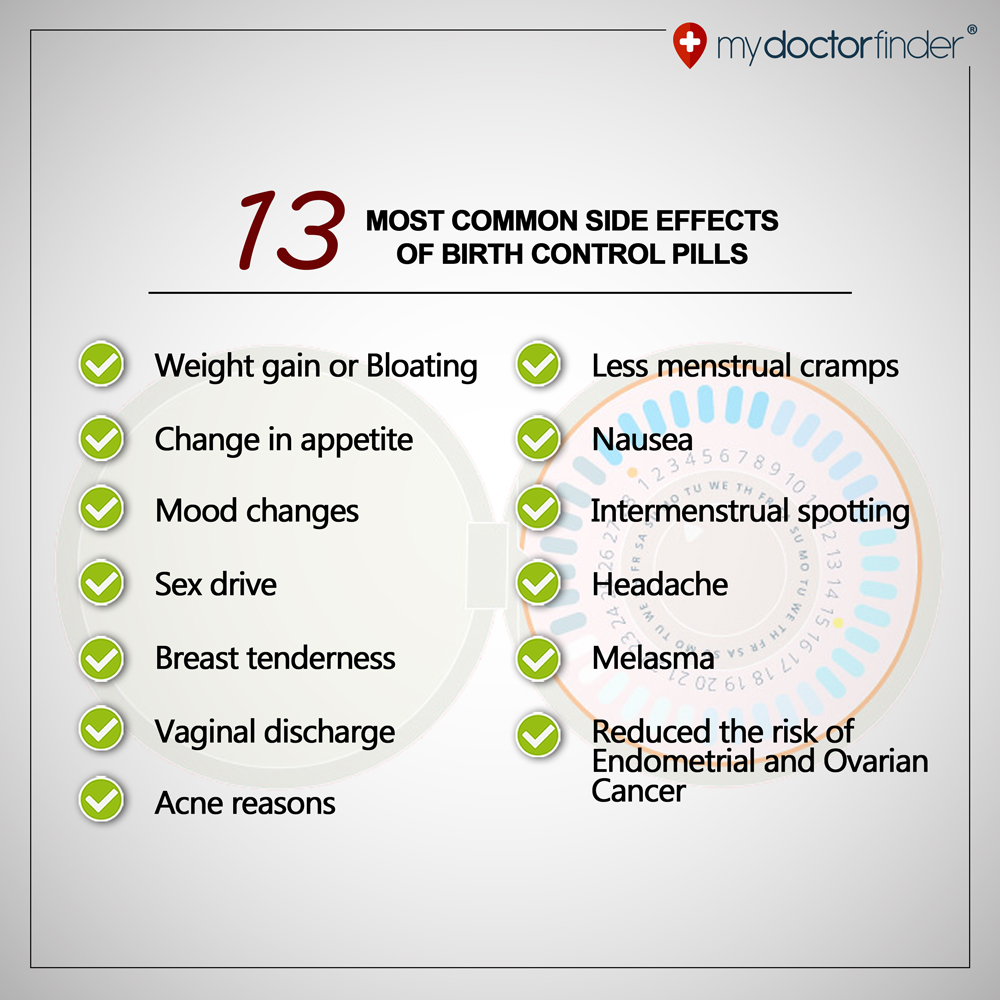 For example, a common health risk of hormonal birth control pills, patches and rings are an increase in the probability of stroke, blood clots, higher cholesterol levels and high blood pressure, says Dr. Tran. Though your risk of a blood clot with use of hormonal contraception (if you don’t have any other risk factors) is only about one in 3,000[2]Women’s Health. National Blood Clot Alliance. Accessed 3/29/22. and lower than your risk of blood clots during pregnancy.
For example, a common health risk of hormonal birth control pills, patches and rings are an increase in the probability of stroke, blood clots, higher cholesterol levels and high blood pressure, says Dr. Tran. Though your risk of a blood clot with use of hormonal contraception (if you don’t have any other risk factors) is only about one in 3,000[2]Women’s Health. National Blood Clot Alliance. Accessed 3/29/22. and lower than your risk of blood clots during pregnancy.
The Depo-Provera shot may increase the risk of bone density loss with prolonged use though this loss is usually reversed when you stop the method. All hormonal methods have the potential to cause mood changes or worsen depression in some people. But in most cases, the benefits of birth control do outweigh the more rare risks.
Is Birth Control Safe for Long-Term Use?
The short answer is yes, according to Dr.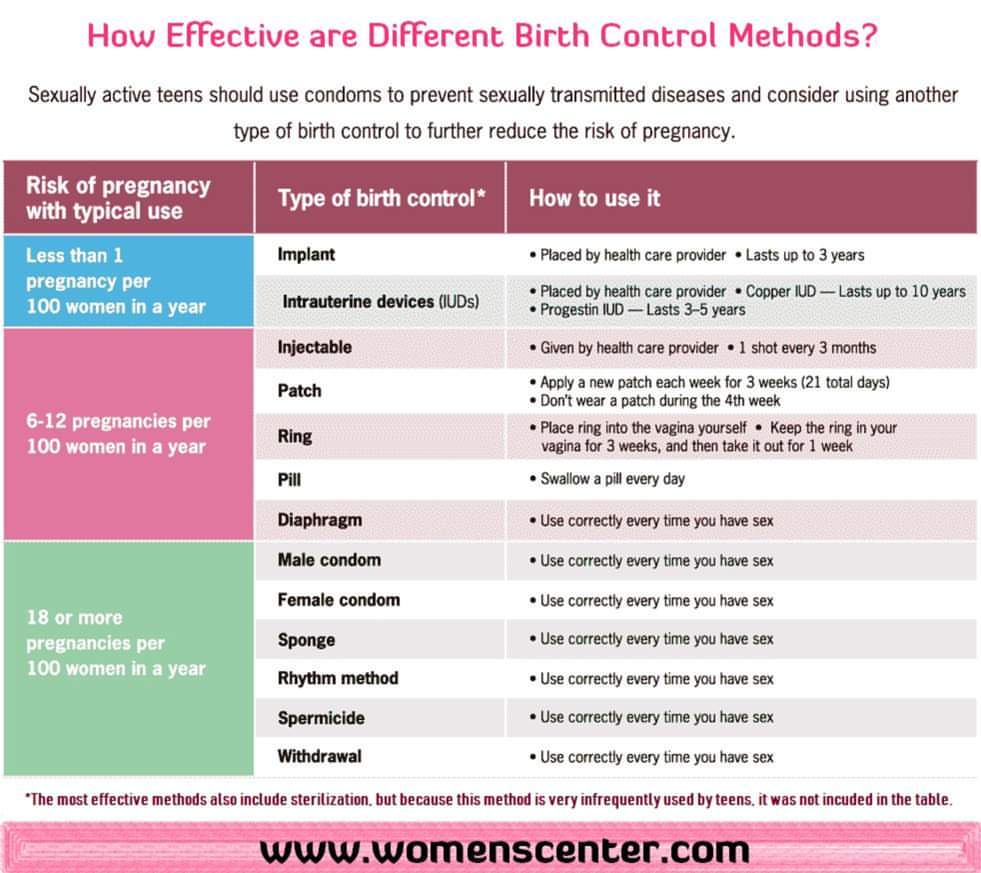 Yen—birth control in general should be safe for most people to use on a long-term basis, and some forms of birth control even have the possible benefits of lowering your risk of certain kinds of cancer. “It’s all a risk-benefit decision: How bad would it be for you to get pregnant?” says Dr. Yen. “Pregnancy has a high morbidity and mortality rate, can take away from your bone health and is taxing on the person who has to carry the pregnancy.”
Yen—birth control in general should be safe for most people to use on a long-term basis, and some forms of birth control even have the possible benefits of lowering your risk of certain kinds of cancer. “It’s all a risk-benefit decision: How bad would it be for you to get pregnant?” says Dr. Yen. “Pregnancy has a high morbidity and mortality rate, can take away from your bone health and is taxing on the person who has to carry the pregnancy.”
If there’s an extended period of time in which you don’t want to be pregnant, you should stay on birth control, says Dr. Yen. However, if you do experience severe forms of any of the above side effects or health risks such as blood clots or severe depression, you should bring this to your doctor’s immediate attention in order to switch forms of birth control or get off birth control altogether.
What Type of Birth Control Is Right for Me?
First, talk to your doctor about what type of birth control is right for you.:max_bytes(150000):strip_icc()/nexplanon-birth-control-implant-faq-9068641-5c8ad59046e0fb00014a9688.png) “I usually talk to patients first, asking them about how frequently they have periods, for how long, the amount of bleeding and if there’s any pain with periods,” says Dr. Tran.
“I usually talk to patients first, asking them about how frequently they have periods, for how long, the amount of bleeding and if there’s any pain with periods,” says Dr. Tran.
Your healthcare provider will also want to know more details about your reproductive intentions, including whether and when you might want to become pregnant in the future and lifestyle, such as whether you are able to remember to take a pill at the same time every day. They will also want to know about any specific medical conditions you have which might make some methods of birth control less safe for you than others. Based on your age, weight and height, and all of the information you’ve given, your doctor can help you to narrow down the options based on your preferences. “Then we go over the risks and benefits of each potential type of birth control before we pick one form of contraception for them,” says Dr. Tran.
When it comes to other non-hormonal options, people who have frequent or recurrent UTIs likely shouldn’t rely on non-hormonal gels or diaphragms as their form of birth control.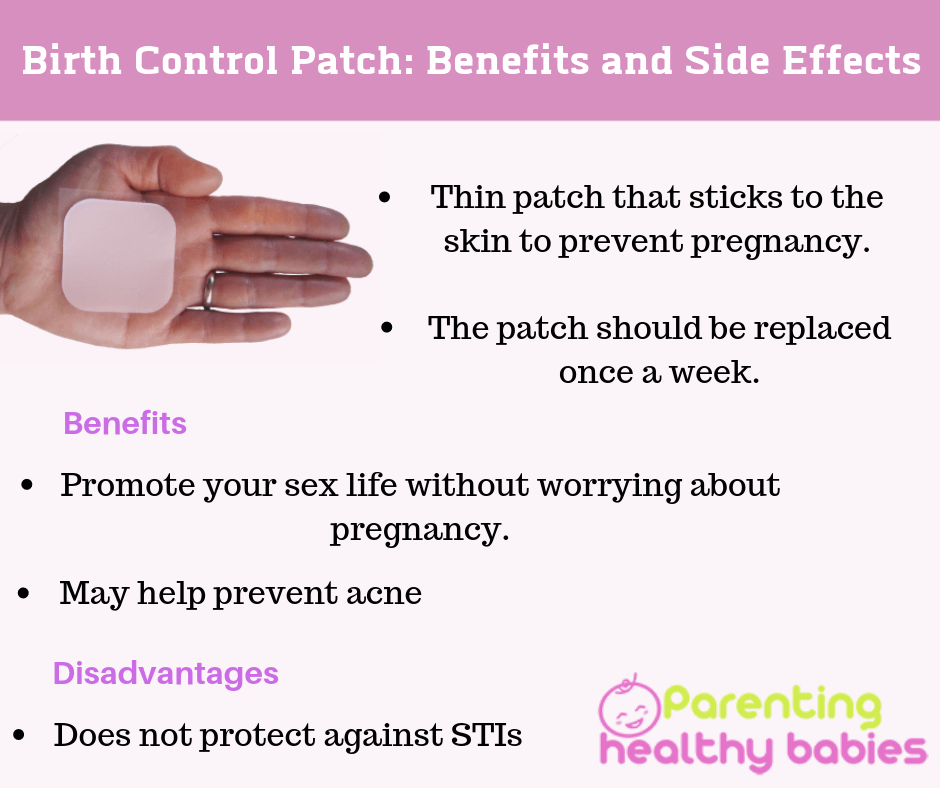
It may take some trial and error to find the right birth control method for example, (there are 40 different types of birth control pills, Dr. Yen points out), but you can work with your doctor and ask specific questions to make sure the form of birth control you choose is right for you.
Contraceptive pills and their side effects: what women need to know
All types of hormonal contraceptives are known for their potential side effects. Experts told Euronews Next about them
Recent studies have shown that women taking hormonal contraceptives, in particular progestogen-only “mini pills”, have an increased risk of developing breast cancer.
This is nothing new, as all types of hormonal contraceptives are known for their potential side effects, some more serious than others.
The pill is still considered a life-changing discovery that gave women a convenient and reliable way to prevent unwanted pregnancies and is even prescribed for conditions such as endometriosis.
But recent research findings have revived the debate about contraceptive methods and their impact on women’s physical and mental health.
“Pills as a general broad-spectrum drug are one of the best developments in the world of contraception for millions and millions of people, and they remain an incredibly common form of contraception. But they are not suitable for everyone,” Dr. Alissa Dweck, a practitioner, told Euronews Next gynecologist in New York.
From mood swings to chest pains, headaches and decreased sex drive: in recent years, many women have complained about the side effects of hormonal contraceptives and even stopped taking pills after reports of serious health complications.
A decade ago, public alarm gripped France when a 25-year-old woman filed a lawsuit over a stroke she suffered while taking third-generation birth control pills that combine the female hormone estrogen with a synthetic version of progesterone.
This “panic” caused a sharp decline in the number of women taking birth control pills in subsequent years, although they are still the most common method of contraception in the country, according to the French Institute for Demographic Research.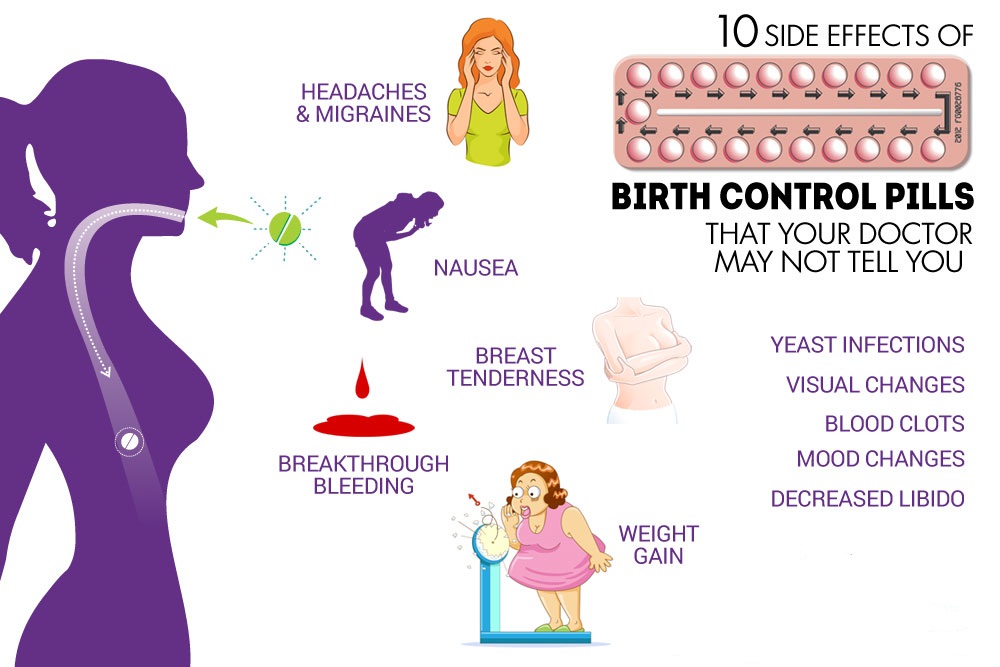
What are the main side effects of the tablets?
“Common side effects with birth control pills include irregular bleeding, nausea, breast tenderness, and possible weight changes either way,” says Dweck.
In some minor cases, people can develop much more serious complications, such as blood clots that can travel to the lungs and cause a pulmonary embolism, or reach the brain and cause a stroke.
Research has also linked birth control pills to an increased risk of certain types of cancer, particularly breast, cervical, and liver cancer.
A recent study published in the journal PLOS Medicine found that women who take hormonal contraceptives have a 20-30% higher risk of developing breast cancer.
“This risk is independent of the type of contraceptive last used,” says Kirstin Peary, Cancer Epidemiology Officer at the Oxford Public Health Center and one of the study’s lead authors.
“However, since the main risk of developing breast cancer in women in their 20s and 30s is low, the excess number of breast cancers associated with contraceptive use at a younger age is also very small,” she told Euronews.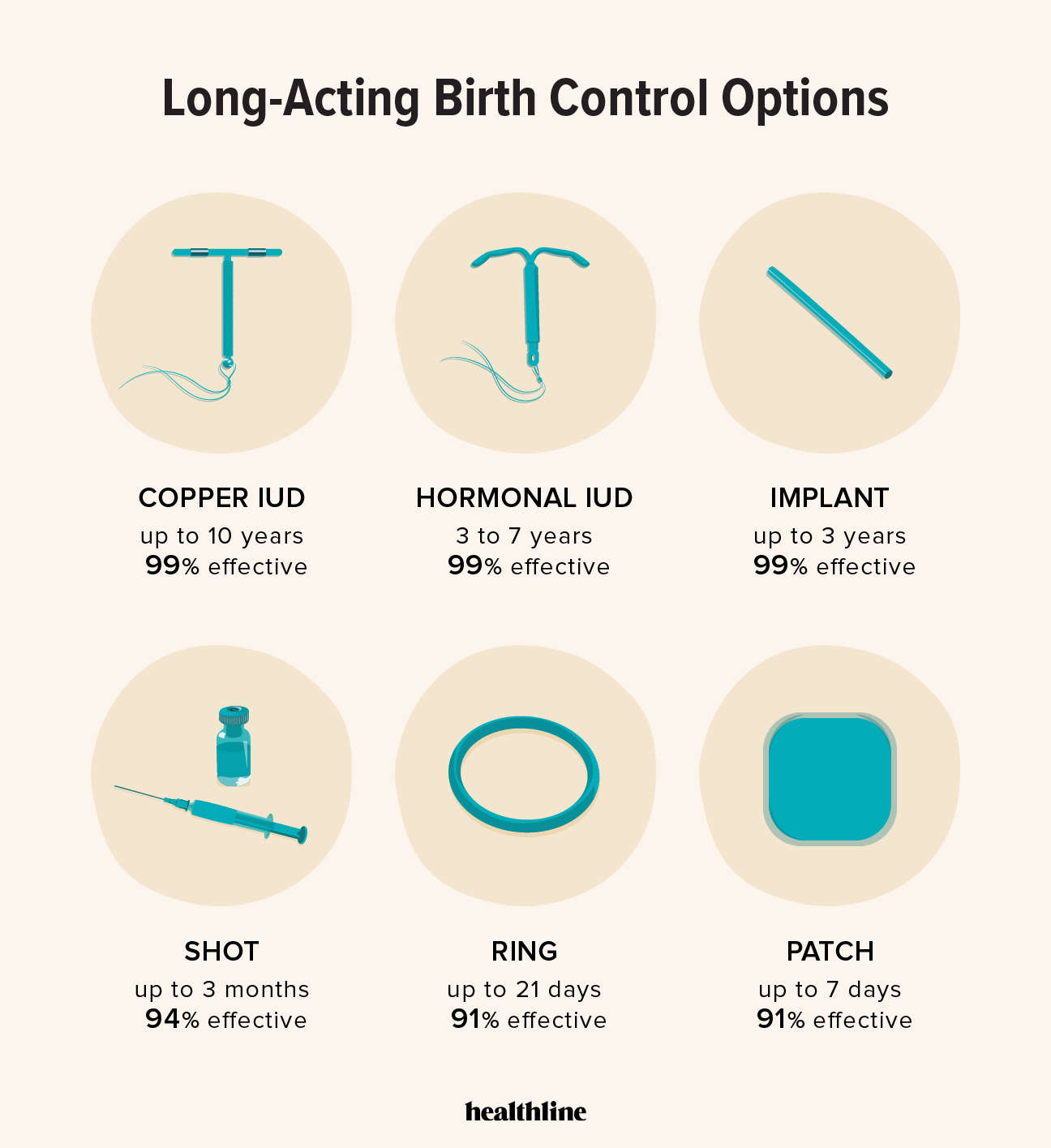 next.
next.
Although these results may seem alarming, Piri noted that the risk only persists while taking the pills, and after stopping taking them, it begins to decrease significantly.
Dweck added that in some cases, birth control pills may even be helpful.
“It is well known that birth control pills also help prevent the risk of ovarian cancer and uterine cancer. And this is not very publicized, but certainly very important for those people who are worried about these diseases, perhaps due to a family history”, – she said.
“So for some people, birth control pills may be helpful, but for others they can cause side effects,” she added, noting that people should be aware of their medical history before taking medication.
However, some experts, such as Peary, are calling for more research into the side effects of the “mini-pills”.
“Much is known about the risks associated with the use of combined oral contraceptives, as these contraceptives have been used by a large number of women worldwide for many decades. However, the use of progestogen-only contraceptives has increased significantly in the UK in recent decades, so it is important to continue to evaluate short-term and long-term risks associated with their use,” she said.
However, the use of progestogen-only contraceptives has increased significantly in the UK in recent decades, so it is important to continue to evaluate short-term and long-term risks associated with their use,” she said.
What other options are there?
Fortunately, there are alternatives to birth control pills when it comes to preventing unwanted pregnancies.
As the most relevant form of non-hormonal contraception for those considering taking hormone pills, Dweck cited ovulation-tracking and ovulation-predicting apps, female or male condoms, which have the added benefit of preventing sexually transmitted infections (STIs) , and non-hormonal intrauterine devices (IUDs).
There is hope on another front: male contraception. While women have borne much of the responsibility for birth control for decades, recent research suggests that men may soon be able to share the burden more equitably, or even remove it entirely from women’s shoulders – by taking “male pills”, rubbing hormone gel on their shoulders, or undergoing a reversible vasectomy. .
.
Quitting Pills
Many women are not waiting for the revolution in male contraception and are already giving up hormonal contraceptives.
A year ago Sophia* (name changed at her request) was put on birth control pills after she was diagnosed with polycystic ovary syndrome, a condition that affects reproductive hormones and commonly causes irregular periods, acne, excessive hair growth and infertility.
“Unfortunately, when you go to the doctor’s office and you have PCOS, the only thing they tell you is to lose weight and take hormone pills if you want to get regular periods, and then when you try to conceive, you can go back and discuss fertility treatments,” she told Euronews Next.
When Sophia asked about possible side effects, the doctor, she said, “brushed it off” and emphasized that the pills would help reduce the risk of developing uterine cancer, which is increased with PCOS.
Not fully convinced, but having no alternatives, she started taking pills until the side effects became too severe.
“One particular thing that really scared me was mood swings. I really struggled with them, because I could go through different emotional states, and one day out of the blue I felt sad, then I was happy, and then crying,” she says. “I had periods, a series of days, when I just didn’t feel like myself.”
Sophia said that at first she believed that the pills would help to minimize the symptoms of her illness, but in the end they did her more harm than good.
Meanwhile, on social media, she came across stories of women who said they managed to balance their PCOS naturally, without hormonal contraception.
After five months of taking the pills, tired of the side effects, she decided to try dietary and lifestyle changes instead to control her health.
“For me, the decision to stop taking pills was a medical one,” she explained. “I wanted to get my health back and wanted to go the traditional, natural way to try and solve the problem.”
Although her path to natural hormone balance was not easy, she saw some positive results and said she was able to achieve some regularity of her menstrual cycle and much better mood in general
Social media stories praising the benefits of going off the pill are encouraging more women to step up and live without hormones.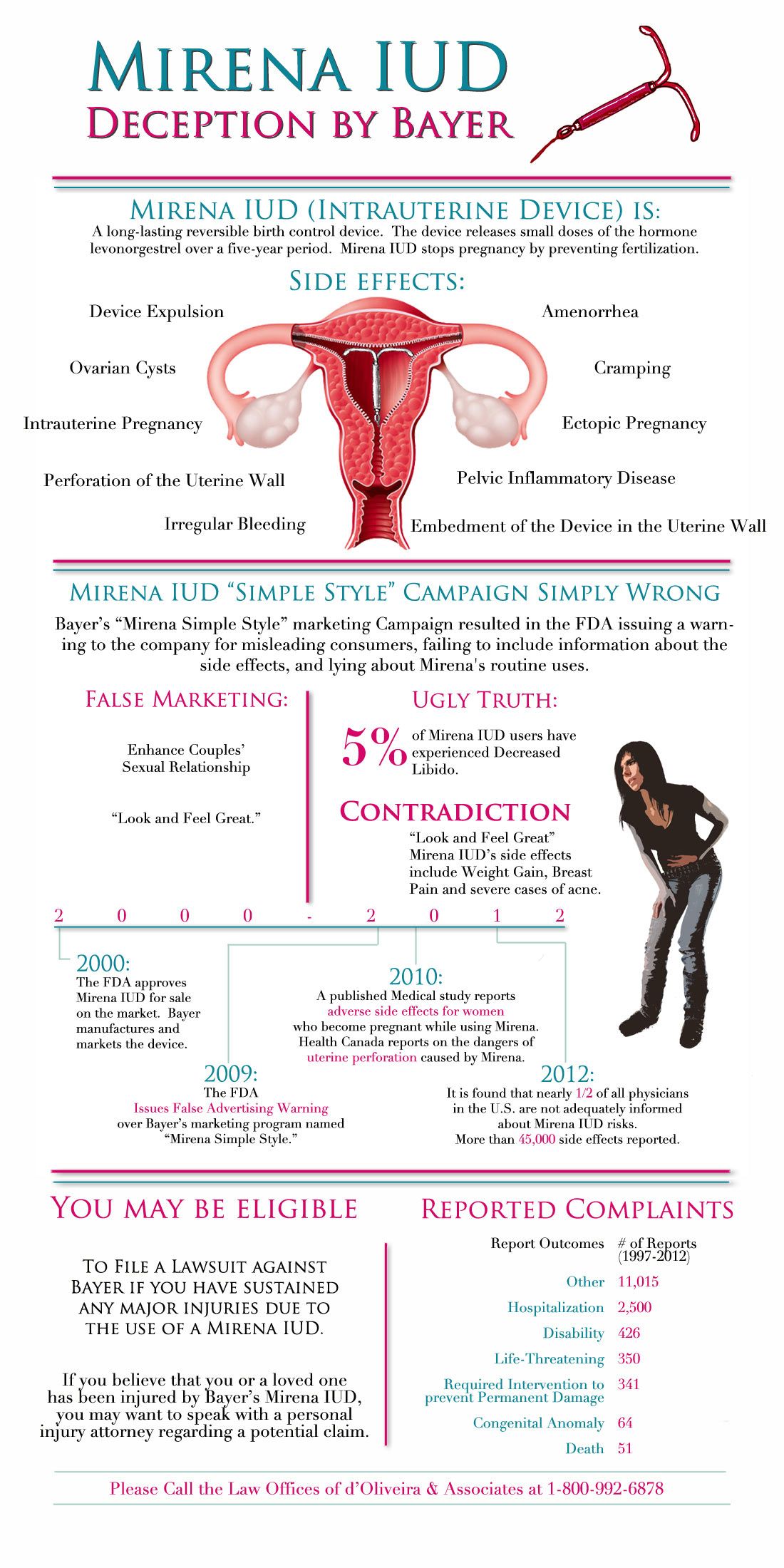 0003
0003
However, experts warn of the dangers of making important medical decisions by following trends online without consulting a healthcare professional.
“The great thing about social media is that it draws attention to topics that we all need to discuss, whether it’s with our friends, family, doctors, partners,” says Dweck. “The downside is that there’s a lot of misinformation, or wrong information, or information that may apply to one person, but not to everyone. So this needs to be taken into account. So, the good news is that we are talking about it. The bad news is that we really need to talk to experts, who are familiar with our individual circumstances to find the best options.”
Contraceptive pills: types, how to take?
Date
13.07.2022
Harmonious relationships and sexual life are built on trust. But the fear of getting pregnant can leave its mark. Often, women refuse intimacy just because they are afraid of pregnancy and an unplanned birth of a child.:max_bytes(150000):strip_icc()/loestrin-and-lo-loestrin-fe-9068321-5c8ad60fc9e77c0001eb1bbd.png) Someone is sure that there is no absolutely reliable remedy, others do not even try to understand which birth control pills and suppositories are better. But it is a competent approach to choosing a contraceptive that allows you to build relationships and get rid of unnecessary fear.
Someone is sure that there is no absolutely reliable remedy, others do not even try to understand which birth control pills and suppositories are better. But it is a competent approach to choosing a contraceptive that allows you to build relationships and get rid of unnecessary fear.
It is immediately worth noting that a gynecologist should select contraceptives. To do this, a girl with the onset of sexual activity should consult a specialist, undergo an examination to exclude possible contraindications, and only after that the doctor will be able to choose an effective, and most importantly, safe method of contraception. Of course, there are intrauterine devices, caps, and so on, but it is the pills that are the most popular among women. They are easy to use, with the right choice they do not cause any side effects, and if necessary, you can stop taking the drug, for example, to get pregnant.
All modern contraceptives are divided into hormonal and non-hormonal. The former are also divided into oral and mini-pills. Tablets must be taken daily at the same time without gaps to obtain the desired effect.
Tablets must be taken daily at the same time without gaps to obtain the desired effect.
Contraceptives may differ in the amount of hormones they contain. Some women may use high dosage products, while others may have contraindications. Therefore, the choice of means should be approached especially carefully. Oral contraceptives are divided into monophasic, two and three-phase. The result of their use is the same – providing a contraceptive effect. But the features of the application may be different. Therefore, each group must be considered separately.
Combined
Normally, the female body produces two types of hormones. These are estrogen and progesterone. Combined contraceptives include both types of hormone at once, but they are of artificial origin. So, ethinylestradiol is used as a replacement for estrogen. Progesterone is replaced in preparations with levonorgestrel. Their number may vary, so for each woman you can choose the best option, taking into account the characteristics of her body.
Monophasic contraceptives
In this case, the amount of hormones in each tablet is the same. In other words, even if the girl mixed up and started taking the last pill towards the first, there will be no changes, since they are all the same. One pack per cycle. Preparations may differ in composition, amount of hormones and price. The most popular can be called Diane-35, Regulon, Mercilon, Regividon and so on. It is recommended to choose after the examination to exclude contraindications.
Biphasic
Unlike monophasic, in this case, the amount of hormones differs based on the day of the cycle, so they should be taken in strict sequence. For convenience, the tablets have different colors so that a woman does not get confused about which one to start taking and which one to end with. The most popular remedy from this group is Anteovin.
Triphasic
This type of tablet also belongs to combined preparations (COCs). Here, the course is divided not into two periods, but into three, based on the characteristics of the hormonal level of a woman during the full cycle. That is why such drugs cause a minimum of side effects and are well tolerated by most girls.
That is why such drugs cause a minimum of side effects and are well tolerated by most girls.
The tablets are also three-coloured for convenience. Take them in strict order. Often, drugs are prescribed to women over 35 years of age. These are such well-known names as Tri-regol, Triziston, Three merci.
Mini-pills
Differ in that they contain only progestogen or only progestin. Due to this, the likelihood of side effects is minimal. For this reason, such contraceptives are often prescribed to women during feeding, as well as to smoking girls, patients with heart disease, kidney disease, and diabetes.
As a result of taking the drug, there is a thickening of the mucous membrane in the vagina, which excludes the fertilization of the egg. At the same time, the uterine mucosa also changes, so the egg can no longer be implanted. Of the popular drugs, it is worth noting the well-established Exluton and Charozetta.
Non-hormonal agents
These include so-called spermicides. Preparations of this group are more suitable for those who have an irregular sex life. The action is only local, so there can be no side effects. At the same time, in terms of the reliability of protection against conception, they are not inferior to hormone-based drugs.
Preparations of this group are more suitable for those who have an irregular sex life. The action is only local, so there can be no side effects. At the same time, in terms of the reliability of protection against conception, they are not inferior to hormone-based drugs.
To achieve the result, an hour before sexual intimacy, it is necessary to insert a tablet into the vagina.
The drugs are effective, with good feedback from women, but they also have disadvantages:
- They should not be used constantly, as this can cause a violation of the vaginal microflora.
- Do not take a bath an hour before sexual intercourse and a couple of hours after it, so as not to reduce the effect of the contraceptive.
It is worth highlighting the advantages of drugs:
- They do not cause hormonal disturbances.
- They are very convenient to use.
- Means have practically no contraindications, except for a possible allergic reaction.


